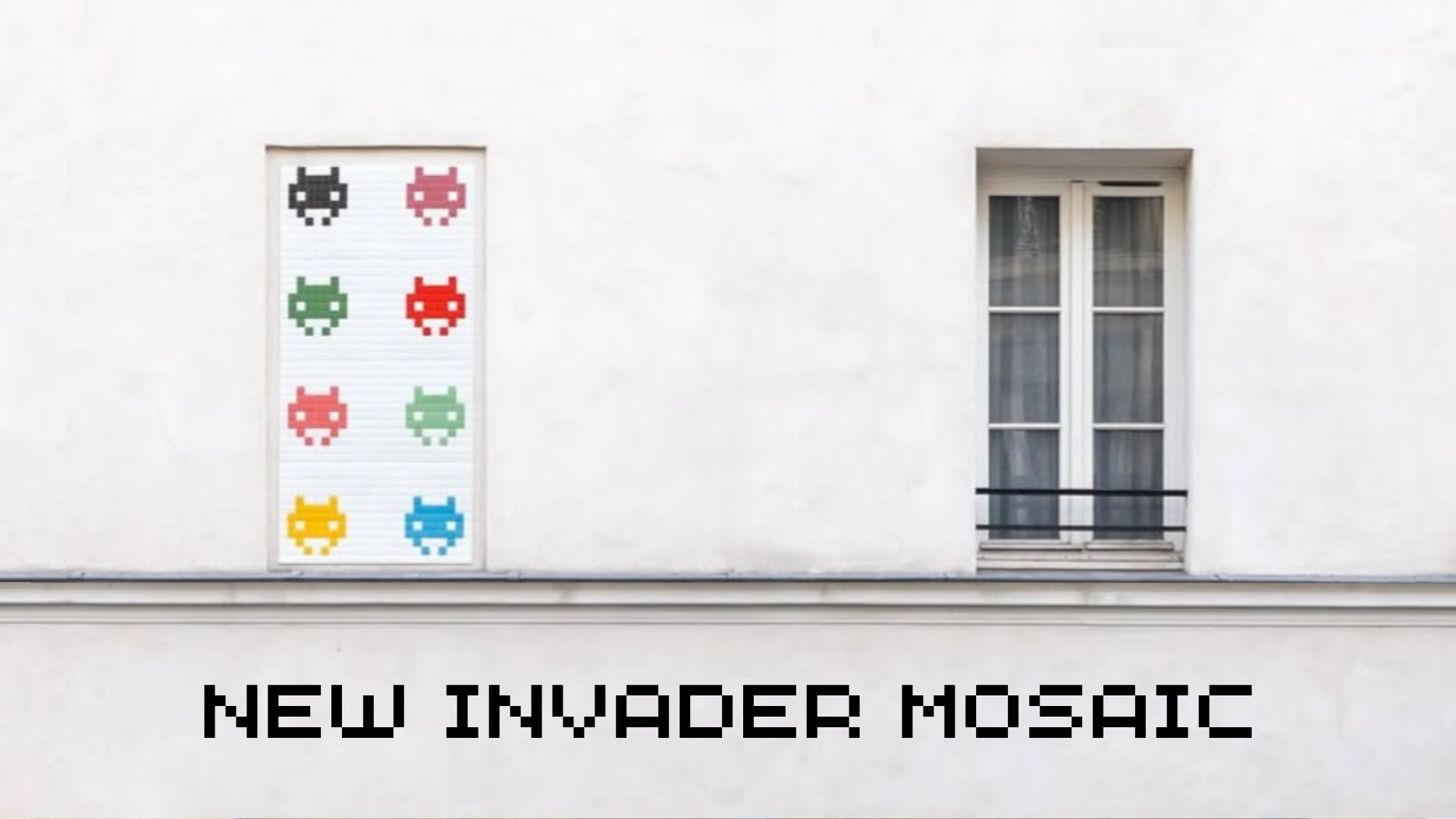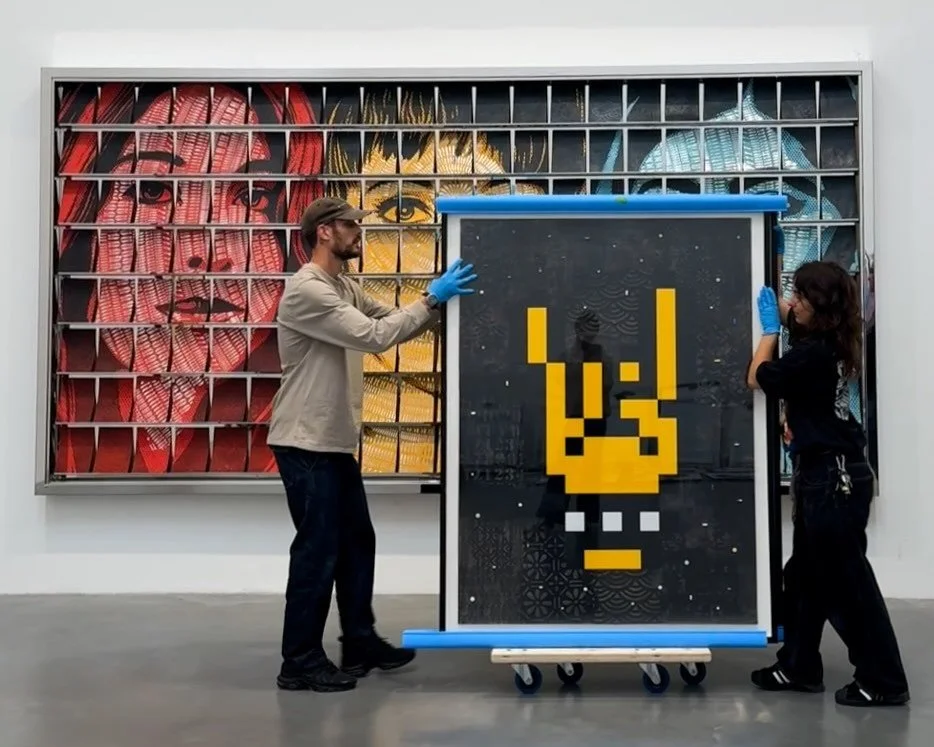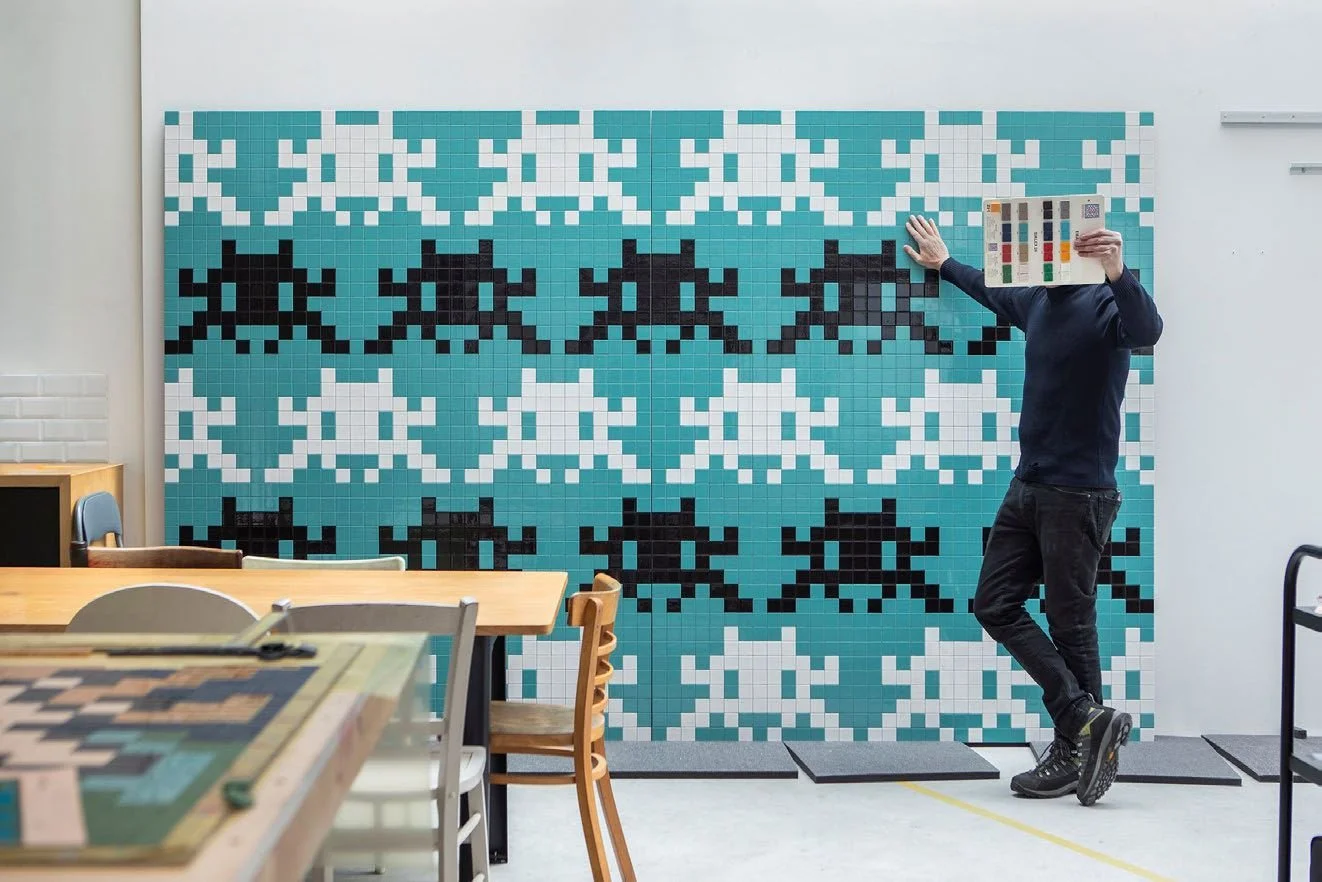Degradation: The Inevitable Wear-and-Tear of Invader’s Works
Read More
The anonymous French artist Invader has been on his Global Space Invasion mission for over two decades. These installations, placed on streets worldwide, inevitably face threats of thefts, copycats, intentional destruction, weather conditions, location, and much more… Other than full destruction, the degradation of Invader’s works is a major factor in affecting the aesthetic of the mosaic.
Introduction
Street art is inherently temporary. Artists like Invader often place their works in public spaces without permission, which already sets the stage for potential removal or alteration. Weather conditions, urban development, and human interaction can all contribute to the degradation of these pieces. The way we define degradation is the impact on the quality of the piece, whether it is tiles breaking in half, pixels falling off the piece, natural or human, or it getting dirty from all the traffic dust. One of the most significant threats to Invader’s mosaics is environmental wear. Exposure to rain, sunlight, and pollution can cause the tiles to fade or crack. Urban environments, with their constant bustle and wear, often accelerate this process, leading to pieces that may look significantly different just a few years after installation.
In addition to natural degradation, vandalism poses a major risk. Street art often attracts both admiration and disdain, leading some individuals to deface or remove pieces. Moreover, urban development can result in the destruction of works as buildings are renovated or demolished, further erasing Invader's presence from the landscape.
PA_572
The Medium
Invaders are made of ceramic tiles, which can be bought easily at Home Depot. Now, it is commonly believed that ceramic tiles could last forever, some even claiming their lifespan can even exceed humans’ lives. However, that is not the case, especially when the artist’s works are becoming increasingly sought-after. Much thievery surrounds publicly installed pieces, while others try to replicate the original mosaics solely from external tiles. The artist has taken security measures against the aforementioned threats, including a strong adhesive that bonds with the concrete walls it is installed on. This makes it so that once someone tries to remove the mosaic from the wall, it loses its order, and pixels fall off the wall unaccordingly.
PA_665
The Cause
PA_383
Due to adverse weather conditions such as acid rain, the wear-and-tear of Invader’s mosaics is enhanced and intensified. At first glance, Invader’s mosaics may not be affected much by such weather conditions —In comparison to Banksy, where one of his works was washed off by waves. Regardless, concrete can be corroded by an acidic medium, meaning it would deteriorate in color and shape over time when exposed to public hazards. However, it should be noted that this process takes a lot of time —up to a few decades— thus degradation by natural means is rare.
Thievery leads to degradation. It often results in incomplete tiles remaining on the wall, resulting in a half-destroyed piece. But weathering, on the other hand, isn’t always the case when we talk about the cause of degradation. At times, some mosaics will lose a piece or two from long exposure to air, but usually, a large surface loss represents an attempt of thievery.
Alternatively, Invader works are a part of street art, and their nature lies between the gray area of the cities’ legality. They are often not accepted by the government and authorities and are sometimes forced to be removed from the walls of the urban environment. Therefore, officials’ call often results in degradation or destruction.
BAB_12
The Degradation
Several causes result in degradation, often seen in many of Invader’s pieces —check the news from Invader Spotter to see the most recent updates. The exact cause of each degraded piece is unsure, but what is definite is that they sure look different from how they should be, in a bad way.
Many may think that the older works of Invader’s collections tend to be the majority of his degraded pieces, but that is not the case. Disapproval from the property’s owner and other circumstances may also result in either destroyed or degraded pieces. Many newer pieces are degraded by human actions intentionally, attempting to take out the whole mosaic.
Take the Invasion of Basque as an example, it is the most recent Invasion by Invader. Yet, some mosaics inevitably suffered from degradation and removal. BAB_12 and BAB_34 degraded over time, probably due to human means as the former one is almost fully ripped off the wall, and the second is blackened with some kind of paint. BAB_21 and BAB_54, on the other hand, are both fully destroyed.
BAB_34
BAB_21
BAB_54
Preservation
While degradation is inevitable, the preservation of mosaics is starting to gain traction. Many advocates argue for the importance of protecting these works as cultural artifacts. Initiatives to document and preserve street art digitally have emerged, allowing future generations to appreciate Invader’s contributions even if the physical pieces are lost.
Community engagement plays a crucial role in the preservation of street art. When local populations take pride in these works, they are more likely to protect them. Programs that encourage public awareness and appreciation can help combat the indifference that often leads to degradation.
The degradation of Invader's works is a reflection of the broader challenges faced by street art in general. While it is a natural part of the life cycle of public art, it opens up discussions about preservation, community responsibility, and the value we place on these cultural markers. As we navigate the complexities of urban environments, recognizing the beauty and impermanence of pieces like Invader’s mosaics can inspire a deeper appreciation for the art that surrounds us.
As art enthusiasts and community members, we can take active steps to support and preserve street art. Whether through advocacy, participation in local art initiatives, or simply by appreciating these works in their original contexts, we can help ensure that the legacy of artists like Invader continues to inspire for years to come.
LDN_122
All rights reserved
~
We do not own any copyrights to the photos used
~
All rights reserved ~ We do not own any copyrights to the photos used ~








































